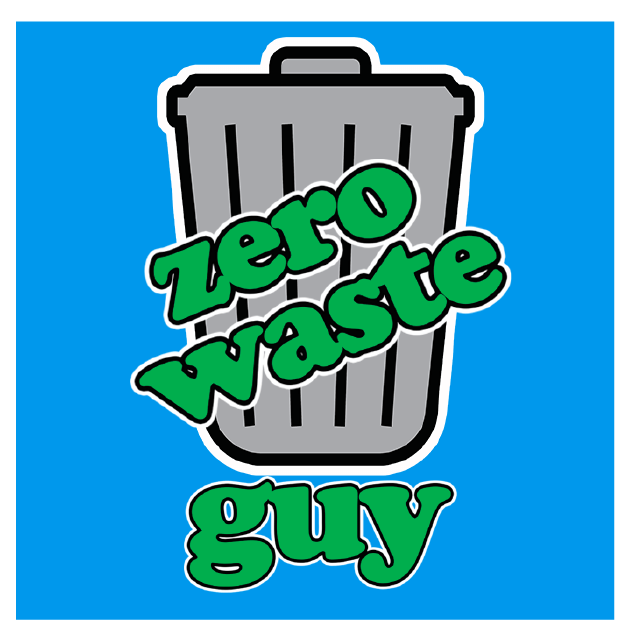In a disposable world it is more important than ever to be mindful of the items we purchase, including the indirect items that accompany them. Oftentimes we find ourselves consuming plastic items that will literally last forever in a landfill despite us only using those items for a short amount of time. To be truly zero waste we must eradicate the world of anything that cannot be recycled back into the earth after its useful life has ended.
|
The United States consumes 500 million disposable straws every day.
|
My friend Shauna (@zerowasteteacher) wrote a letter recently to a restaurant she likes that automatically puts straws in their customers’ beverages without asking if they actually want them. When they didn’t respond to her email she decided to share her letter directly on their Facebook page. I feel like I’m being difficult when I preemptively request no straw with my beverage, but I do that because I can’t stand when one is automatically placed in my drink.

Here are several reasons why restaurants and bars should stop using straws right now:
- The United States consumes 500 million disposable straws every day.
There are only 320 million of us, so how is this possible? Next time you go to a restaurant or bar, observe your surroundings. Does your server place a straw in your glass for you, throw a handful down on the table, or only provide straws on request? For the places that automatically put one in your glass, observe how many straws your group goes through over the course of your meal. Think about the last time you ordered a cocktail at a bar. Did the bartender dip a straw in the glass to take a small taste of the drink then throw it away? How many straws did you go through? There are usually one or two straws in each cocktail!
- Plastic straws don’t get recycled. Straws seem like no big deal, because they are so small, but 500 million per day really adds up, especially when you consider that straws do not get recycled! Most are made from Polypropylene (plastic #5) which is low quality plastic that is most commonly used as yogurt containers, butter tubs and other food items.
- Plastic constitutes 90% of all trash floating in our oceans. I can’t say this enough: We design plastic to last forever but only use it for a minute. How long did you use that straw with lunch today? Maybe a half hour before tossing it in a bin. If your straw was littered on the street and found its way into a storm drain, it would soon be in the ocean, where it would float around indefinitely.
- Straws end up in the ocean (need to reinforce reasons 3). Straws are in the top 10 of items picked up during trash cleanups. When combined with plastic stir sticks (another item to avoid) they make up 4% of all material collected. Forty-four percent of all seabird species and 22% of all cetaceans (think Flipper) have ingested plastic. Ugh! Plastic now outnumbers algae 6-to-1 by volume. This means that the typically animal that eats algae also eats plastic because tiny globs of plastic are indistinguishable to marine life.
- Drinks taste just as good without a straw. Most of us don’t use straws at home, so why are they so commonplace in restaurants? I have heard from many people the belief that straws are more sanitary than drinking from a restaurant’s glass, but that’s just baloney. The typically commercial kitchen is far more sanitary than your home kitchen. Could you imagine going over to a friend’s house for dinner and demanding that they serve you a drink with a straw because you didn’t want to get their germs? They’d probably question why you were bothering to eat their food too!
Anyway, the list goes on and on. I wasn’t planning on blogging about this, but was instead going to highlight Shauna’s post. Nonetheless, here we are. Although straws might not seem like a big deal, they really are. They pollute our oceans and waterways, don’t get recycled and don’t break down. This is an easy fix. At your next meal simply request that your drink come without a straw. It might feel a little uncomfortable at first, but I can assure you it gets easy over time.
Sources for the information above and many others are courtesy of Choose to Be Straw Free.

<3 <3
I understand all of the reasons , but when I tell most of the people not to use straws, they ask me how could it end up in the ocean if they are throwing it in the trash bin in the restaurant? And I don’t know what to say, the only thing I know is that the ocean is full of plastic straws.
Most garbage gets into the ocean via storm drains. Cigarette butts I think are the most common, because people are constantly throwing them on the ground, but other soda cups with plastic lids and straws get littered a lot too.
Plastic straws tend to end up in our waterways because they are insignificant compared to say car tires.
Straws are easily overlooked for landfill, and end up on the street.
thank you,
Bren
Ain’t that the truth. I was talking with a server last weekend about straws and she said a lot of customers go crazy when they don’t get their straw. Now THAT is crazy!